How Many Active Users are There on Facebook?[2022 Updated]
Written by, Jalluri
Updated April, 11, 2022
Wondering about Facebook user statistics? You’ve come to the right place. Here you’ll find a comprehensive hub of facts and figures about Facebook and its services.
Fascinating Facts
- Facebook has a remarkable 2.74 billion monthly active users.
- Facebook sits at the top with a staggering 1.82 billion Facebook daily active users.
- Facebook has 1.3 billion Messenger users worldwide, as well as over 300,000 active bots.
- There are over 290 million Facebook users in India ONLY.
- More than 80 million small businesses use Facebook Pages.
- Facebook’s average advertising revenue per user (ARPU) was $29.25 in 2019.
What is Facebook? What can you do with it?
The shortest answer is that Facebook is an online social networking website. People use it to create profiles, personalize them, share all sorts of personal info or opinions, and connect with others (known or unknown) worldwide.
1. How many users does Facebook have?
With 1.22 billion worldwide Facebook users in 2015 and a prospective 1.69+ billion expected for 2020, according to a report by Statista – Facebook doesn’t seem to be going anywhere.
As the most popular social media network in the world, Facebook hardly needs an introduction.
If not all, surely most people reading this have a Facebook account or know someone who has one. I, myself, am on Facebook, and pretty much all my family and friends are too.
As impressive as those numbers are, don’t forget that Facebook is still a growing and evolving platform.
(Source: Statista)
2. How many monthly active users do Facebook have?
Facebook has a remarkable 2.74 billion monthly active users as of the 2nd quarter of 2020.
We all know Facebook is popular, even without looking at the stats.
But these numbers from Statista put Facebook in the spotlight as the leading social media website. Facebook actually surpassed 1 billion active users way back in 2012.
(Source: Statista)
3. How many daily active users are there on Facebook?
This social media platform sits at the top with a staggering 1.82 billion Facebook daily active users.
These are impressive Facebook usage statistics reported by Statista for Q3 of 2020 and living proof that Facebook is one of the busiest sites on the internet.
So far, we’ve focused on worldwide numbers.
What about its popularity in the US?
Americans are some of the most active users of the platform.
Facebook visits comprise over 40% of Americans’ total daily social media consumption.
(Source: Statista)
Mobile vs Desktop Daily Active Users
As technology evolves, so do people’s habits. More and more people spend a large chunk of their time online.
The advancement of smart devices and the creation of new ones has made going online easier than ever.
Not long ago, our only portal to the world of the internet was a desktop computer. That’s no longer the case.
The use of desktops has become secondary for many people.
Nowadays, many of us do when we wake up to reach for something on the nightstand. It’s small, flat, cold, and makes all kinds of sounds. That’s right; it’s our smartphone!
But let’s talk figures and percentages.
Here’s a little table with stats on global Facebook usage by device (2020):
| Device | Usage in percentage | Usage in numbers |
| via mobile device | 98% | 2.65 billion people |
| via mobile phone only | 79% | 2.05 billion people |
| via phone and computer | 19% | 494 million people |
| via laptop or desktop PC only | 1.9% | 49 million people |
To paraphrase a popular saying: ‘Figures speak louder than words.”
What makes people so attracted to Facebook, especially via mobile?
The answer is simple:
- Ease of use
- Instant worldwide connection
- Constant upgrades and new features
- Safe shopping
- Video chatting on the go
- Fast uploads/downloads
- Instant news feed
- Portability
(Sources: Statista; pocket-lint.com)
4. How many active users do Facebook Messenger have?
There are 1.3 billion Messenger users worldwide, as well as over 300,000 active bots.
So when you see that green dot on your Messenger app remember that you are one of those 1.3 billion users.
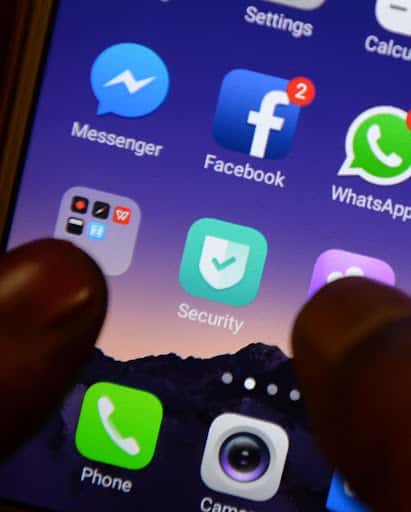
Here are a few more Facebook stats about Messenger usage and growth:
- 1.3 billion users sound like a lot, but that number is projected to grow to 2.4 billion users by 2021.
- Every month, over 20 billion messages are sent between users and businesses.
- Messenger marketing leads to a 70% higher open rate than email marketing.
- Messenger is one of the foremost messaging platforms in the USA, with over 2 million monthly downloads.
The list goes on.
Rumour has it that people are losing interest in Facebook. But these figures seem to point in a different direction.
Yes, the buzz around Facebook is probably not as big as it used to be, but it’s still extremely popular.
(Source: review42)
5. How many Facebook Accounts are Fake?
How many people are on Facebook?
Over 2.8 billion fake accounts were removed from Facebook in the year ending September 30th. That’s roughly 7.7 million a day.
Why does anyone need a fake profile/account?
Fake accounts/profiles are usually created by real people who want to spy on their girlfriends, boyfriends, wives, husbands, etc.
But that’s just one of the reasons for the existence of fake accounts.
Some people who aren’t so savvy with social media sometimes get locked out of their account when they mark it as a Facebook Page (this happens surprisingly often).
Other fake profiles are created for malicious reasons, such as pretending to be someone else or luring someone with false pretenses.
Sounds scary, right?
Let’s take a look at Facebook’s Fake Accounts estimation in recent years (disclosed in its quarterly reports):
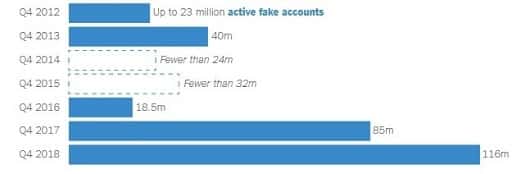
For years journalists and analysts had to rely on Facebook’s estimation of the number of fake accounts.
But Facebook finally succumbed to the pressure and granted access to their so-called transparency page.
This page contains the exact number of fake accounts being taken down each quarter.
Funnily enough, the figures Facebook shared before launching the transparency page don’t match those on the page itself.
(Sources: nytimes.com)
Facebook User Demographics

6. How many seniors aged 65+ are on Facebook?
Seniors are Facebook’s smallest age group, but the platform is still the most popular social media website among the elderly.
Exactly 46% of the seniors aged 65 and older use Facebook.
There’s this idea that older people are clueless about smartphones, the internet, and social media, but these numbers suggest that they may be savvier than we think.
Facebook far outshines other platforms when it comes to the share of seniors who visit their websites. Those figures are 38% for YouTube, 15% for Pinterest, and 11% for LinkedIn.
Despite being the smallest age group on Facebook, seniors still make up a sizable chunk of total Facebook users —4.8%.
(Source: omnicoreagency.com)
7. What percentage of Facebook users are aged 25-34?
Users between the ages of 25 and 34 years are the biggest age group on Facebook.
Naturally, this demographic constitutes a big part of the total number of Facebook users globally and in the US.
In terms of percentages by gender globally, their share looks like this:
- Male users in this age group account for 19.3% of total users
- Female users make up 13.2% of total users
Facebook is often used for posting quotes, sports results, youtube links, etc. Other uses include:
- Browsing and shopping for products
- Chatting with friends, colleagues, or family
- Checking up on children
(Source: Statista, omnicoreagency.com)
8. What percentage of Facebook users are aged 18-24?
76% of 18 to 24-year-olds use Facebook.
A lot of young adults seem to be Facebook users. That’s unsurprising given the constant introduction of new tools and improvements to Facebook and Messenger.
Here are some notable features of Facebook and Messenger:
- Wide variety of sticker packs
- Emojis (animated, small, big)
- Many fonts, colors, and filters
- GIFs
- Video chat and audio calls
- Group video/audio calls
- Group texting
- Live video broadcast
- Location and contact sharing
- Direct YouTube links sharing
- These features probably explain why so many young adults spend long periods on Facebook and Messenger.
(Source: sproutsocial.com)
9. How many female and male Facebook users are there?
In terms of gender distribution, 43% of Facebook users worldwide are female, and 57% are male as of October 2020.
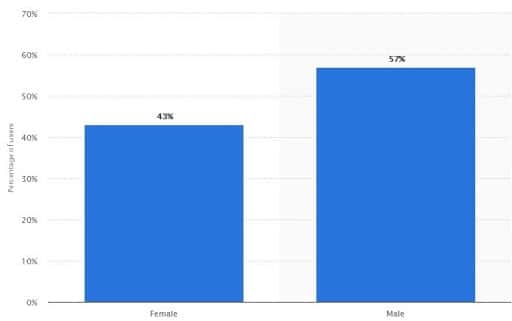
According to Facebook user statistics, there are 1.19 billion female and 1.51 billion male users.
So men must account for most of the traffic on Facebook, right? Wrong. Facebook stats show that women spend more time on the platform despite the ratio between female and male users than men.
(Source: Statista)
10. What are the top 6 countries with the most Facebook users?
There are over 290 million Facebook users in India ONLY.
India leads other countries by a few laps when it comes to the number of Facebook users.
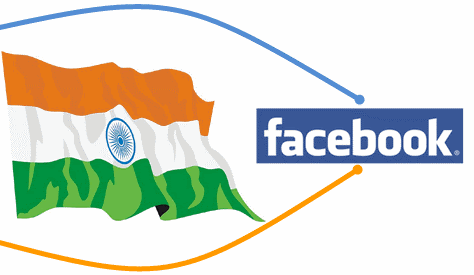
Apart from India, some other countries also pass the 100-million-users mark.
The chart below comes from Statista and shows the 6 countries with the largest number of Facebook users (in millions):
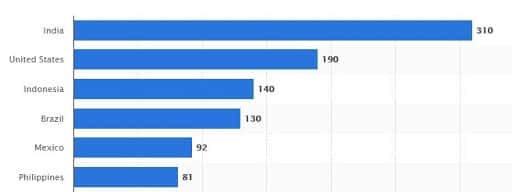
India’s lead makes sense when you consider the country’s population and the growing number of Indians with access to the internet.
It’s worth noting that Facebook is available in at least 101 languages, making it even more accessible worldwide.
You may notice that some of the world’s biggest countries are missing from the ranking above. Why is that?
Facebook is actually banned in some countries:
- China
- Iran
- Syria
- North Korea (most North Koreans can’t access the internet at all)
And some other governments censor the platform instead of outright banning it.
In fact, many countries implement some restrictions on Facebook usage and content.
(Sources: Statista; wikipedia.com)
11. What percentage of US adults who use Facebook are college-educated?
75% of US adults who use Facebook have some college education.
Is internet use related to your level of education?
As you’ll see in the stats below, there is some correlation between internet usage and education level.
This summary shows a breakdown of Facebook users in the US by education level:
- 75% of users have some college education
- 74% of users have completed a college degree or higher
- 61% of users have a high school degree or lower
With more than 26.5 million US fanatic users, Facebook is the most popular and most visited social media network.
(Source: sproutsocial.com)
Facebook Usage Statistics
12. How many images are shared on Facebook every day?
What if I told you that 350 million photos are uploaded on Facebook every single day?
Hard to believe, right?
But if you consider how many of us contribute to this number daily, it makes a lot of sense.

Let’s break it down a bit further:
- 14.58 million photo uploads per hour
- 243,000 photo uploads per minute
- 4,000 photo uploads per second
This is how much data we collectively generate EVERY SINGLE DAY.
Each tag, post, story, and pictures you send and receive contributes to this number!
(Source: omnicoreagency.com)
13. How many users share links, send messages, and friend requests every hour?
According to Facebook usage statistics, we send 16 million Facebook messages every hour.
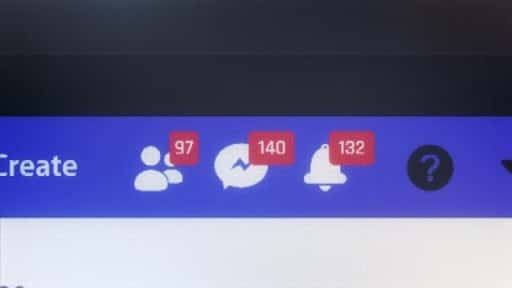
Here are some other statistics that you may not believe:
- 5 new Facebook profiles are created EVERY SECOND
- 510,000 new comments are posted EVERY MINUTE
- 293,000 statuses are updated on Facebook EVERY MINUTE
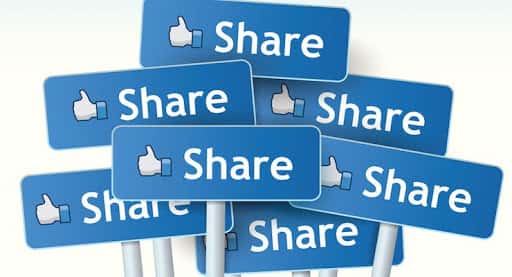
(Source: bernardmarr.com)
14. How many messages are exchanged on Facebook’s products each day?
Users and businesses exchange more than 20 billion messages on Facebook Messenger every month.
The emergence of the eCommerce market changed the way we shop. By shopping online, we all become part of a global market.
Facebook pages are one of the ways we gain access to this market. Businesses use the platform to appeal to their target audience by posting tailored content.
Businesses also make use of Messenger and all of its features.
After all, it’s one of the best messaging applications and allows sellers to connect with buyers and retailers worldwide.
Recent surveys conducted among online buyers show that 64% of internet shoppers prefer to message the seller rather than call or send an email.

Let’s check out Messenger’s figures:
- There are 1.3 billion Messenger users worldwide
- Messenger is looking at 2.4 billion users by 2021
- There are over 40 million active businesses that message people across the globe
- The developer community comprises over 300,000 members
- Messenger marketing generates a 70% higher open rate than email marketing
The expansion of the digital market contributes to the growing number of Messenger users globally.
Messenger also keeps introducing new tools and services to make it easier for companies to do business through the platform.
(Sources: review42; messengernews.fb.com; hootsuite.com)
15. How much time does the average Facebook user spend every day?
One out of nine Facebook users admits to an average of 8 hours of social site networking a day.

A UK-based eCommerce website conducted research.
The website studied the social media habits of 18 to 25-year-olds in Britain.
The study reveals that the most obsessed Facebook Daily Active Users log onto the site over 20 times a day and spend a daily average of eight hours on Facebook and Messenger.
So some young adults spend as much time on social media as they would working a full-time job.
Are you one of those people, or does it seem excessive to you?
(Source: firstpost.com)
16. How many Facebook groups are there?
There are more than 10 million Facebook groups.
Also, there are over 1.4 billion people that use Facebook groups every month.
So why do we have so many Facebook groups, and who joins them?
For frequent and active Facebook group users to join a group means they are with people who share their
- taste (similar likes/dislikes)
- beliefs
- passions
- life situation (similar past/current experiences)
People don’t use Facebook groups just for recreation and joking around.
These groups also serve businesses, especially those working on brand building.
Facebook and Messenger do whatever possible to help professionals conduct their business even when they’re on the move.
Companies and brands can create Facebook groups to interact with existing customers and attract new ones. Groups also allow marketers to connect with their target audience.
Check out a few of the new set of Facebook tools that you can use in groups now:
- Admin Assist – a new set of admin tools that can be of great use to admins of groups. These tools give admins control over pretty much everything within their group.
- Group Topics – users can create topics within their group by using hashtags (#christmas).
- Group promotions via Brand Collabs Manager—this is one of the latest additions on Facebook.
This new feature is a blend of brand promotion and group promotion in one.
For instance, if you click ‘like’ on groups that have the blue ‘verified’ sign (meaning they represent a brand, a famous singer/actor, or some other public figure), you’ll start seeing all posts from this group in your newsfeed.
(Source: zephoria.com; socialmediatoday.com)
17. How many people use Facebook Stories daily compared to Instagram Stories every day?
300 million people use Facebook Stories every day compared to 500 million users of Instagram Stories. The latter also serves over 2 million advertisers.
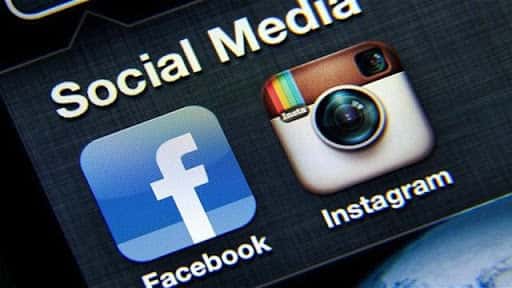
So Instagram is more often used for creating stories than Facebook.
Do you know what a Facebook/Instagram Story is?
Stories are a fun and easy way to upload content and make it more sharable.
They are a visual medium of expression.
Basically, you use your camera to shoot a series of photos or a short video. You can then decorate it using filters, fonts, stickers, brief text, or hashtags offered by Facebook/Instagram Stories.
You can choose who can see your stories (such as a group of close friends) or go the other way around—forbid certain people from viewing them.
Both Facebook and Instagram stories stay up for 24 hours, but you can choose to terminate (delete) them before this period expires.
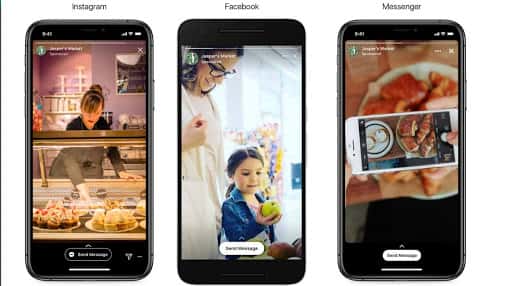
Instagram stories are more widely used by public figures, brands, and ambassadors.
This is probably due to Instagram’s orientation towards more visual and creative content.
Fun fact: One-third of Facebook’s 1.56 billion daily users post or watch stories every day, even though the feature has existed for only about three years.
(Source: techcrunch.com; sproutsocial.com)
18. How many people use Facebook Pages for Businesses?
More than 80 million small businesses use Facebook Pages, according to 2018 data from the company.
Facebook is a leader among social media platforms in terms of business use.
What is a Facebook Page?
A Facebook Page is where you leave your business name and details (address, contact info, etc.) and a brief description of the products/services you offer.
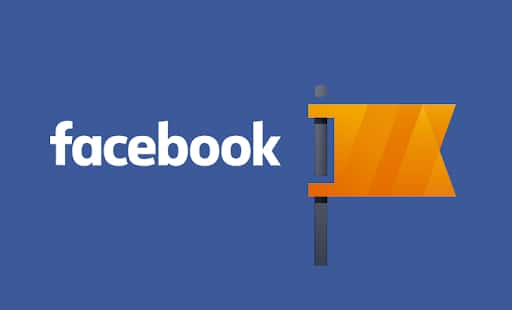
The reason so many people are putting their businesses online isn’t only that they want to be trendsetters.
Businesses also want to take advantage of the possibility to connect directly to customers.
A Facebook Page is a sort of mediator between your business and other people.
It’s like a market but with the benefit of instant communication globally.
Facebook helps you spread the word faster so that you start building a customer base right away!
Creating a Facebook page for your business is easy and allows you to attract more people to your page.
(Source: forbes.com; oberlo.com)
19. How many Facebook users watch video content on Facebook per day?
More than 4 billion video views take place on Facebook EVERY DAY.
That’s a mind-blowing number.
That many people watch videos on Facebook, despite the fact that video content isn’t even Facebook’s primary offering.
That said, YouTube has a slight advantage. The platform is the leader for video content (it’s their primary service, after all).
Anyways, let’s dig a bit deeper into Facebook video stats:
- Every day, Facebook users watch 100 million hours of content.
- Regularly, Facebook receives over 8 billion video views.
- Nearly 85% of Facebook users view videos with the sound turned off.
- Facebook videos are the main entertainment medium for 500 million people daily
- 65% of the total Facebook video views come from mobile users
- You have to watch a video for at least 3 seconds for it to count as a view
That’s pretty impressive and proves how powerful Facebook is.
(Source: kinsta.com; 99firms.com)
Facebook Revenue Statistics
20. What is Facebook’s average worldwide revenue per user?
Facebook’s average advertising revenue per user (ARPU) was $29.25 in 2019.
The company’s overall advertising revenue in 2019 was $69.7 billion.
Let’s take a closer look at Facebook’s average revenue per user (2012-2019), according to Statista (in US dollars):
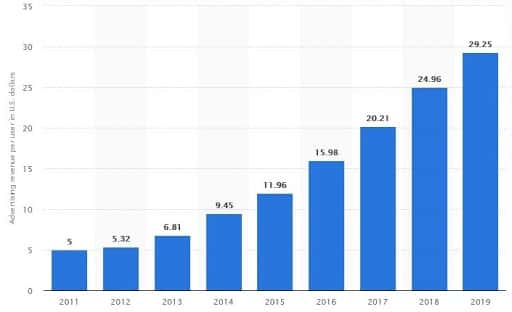
Those numbers are for users globally. Facebook also breaks it down by geographical region:
The below chart shows the company’s total revenue by region in millions:
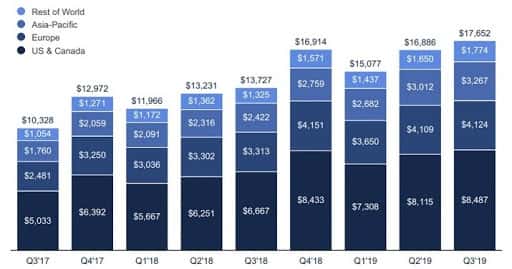
It looks like the US and Canada are Facebook’s top revenue sources by far.
Globally, Facebook’s ARPU amounted to $7.26 in Q3 2019. This is an increase from previous quarters of the same year.
(Source: Statista; businessofapps.com)
21. How many marketers use Facebook?
According to Facebook, 9 million active marketers use social media sites for marketing their goods and services.
More than 7 million advertisers used it in the 1st quarter of the previous year alone.
It’s no secret that Facebook makes most of its revenue through advertisements.
In 2019, the social network’s advertising revenue was over $69.6 billion compared to $1.04 billion in other revenue.
Curiously, most of its sales are made via mobile—$50.6 billion in 2018.
That means 94% of the company’s total advertising revenue comes through mobile.
This goes to show that Facebook has a solid mobile presence.
Bear in mind that these numbers include Facebook’s platforms: Facebook Messenger, Instagram, WhatsApp, etc.
(Source: Statista)
Conclusion
Now that we’ve learned so much about Facebook, it hardly surprises the platform.
Let’s do a recap of the most important things: Facebook is still the most popular social networking site out there.
Seniors are also increasing their presence online nowadays (times change). They are becoming more and more active in social networking. Facebook is their favorite platform.
Females have a stronger presence on Facebook. Maybe they have more to share than males.
With the help of Messenger, Facebook is paving the way for local businesses to gain ground on the global market.
India holds the No.1 position with most Facebook users worldwide.
(Sources: sproutsocial.com; adespresso.com; Statista)
Sources
- Statista
- Statista
- Statista
- pocket-lint.com
- review42
- nytimes.com
- omnicoreagency.com
- Statista
- wikipedia.com
- Statista
- sproutsocial.com
- bernardmarr.com
- review42
- messengernews.fb.com
- hootsuite.com
- firstpost.com
- zephoria.com
- socialmediatoday.com
- techcrunch.com
- sproutsocial.com
- forbes.com
- oberlo.com
- kinsta.com
- 99firms.com
- Statista
- businessofapps.com
- Statista